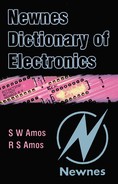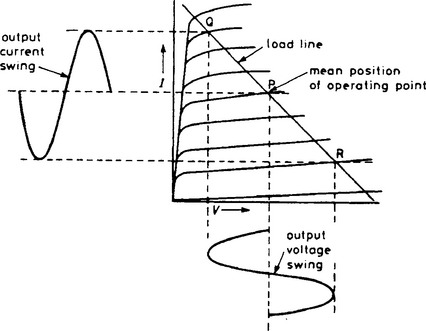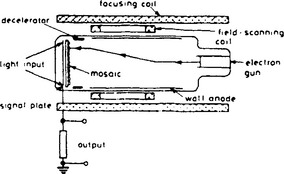O
object In computing, any self-contained set of data. For example, in a filing system the objects are files and directories, in a database the objects are the various items of data that are stored and in DTP or vector graphics the objects are the various textual items (commonly called stories) and individual graphics of which the document is composed.
object code The form taken by a computer program after it has been translated from the source code by compilation or assembly. See computer language.
object linking and embedding (OLE) In computing, the practice of storing pointers to files instead of the file contents themselves. For example, in a Desktop Publishing document which includes a half-tone illustration as a bitmap the conventional approach would be to copy the entire bitmap into the document file. This would occupy appreciable memory and in some circumstances its presence might affect the computer’s performance. Using OLE, however, only the name and address of the bitmap file is stored in the document. The bitmap itself is loaded into memory only when it is displayed on the VDU or printed. OLE makes it possible for a computer to handle longer and more complex documents. It does, however, increase the time taken to display or print the document and it introduces complications if the document is transmitted elsewhere, e.g. for phototypesetting.
object-oriented programming A philosophy of computer programming that divides data into separate units called objects which may be of various types, each handled independently.
occlusion Property of certain solids, particularly some metals, which enables them to absorb gases without chemically combining with them. The final stage in the evacuation of electron tubes is the removal of the last traces of gases occluded within the electrodes. See degassing.
octal scale A counting scale containing eight digits, each digit in a number representing a power of eight. Thus the decimal equivalent of the octal number 352 can be evaluated as follows:
Octal numbers are often used as a shorthand method of writing binary numbers. Because 8 is 23 it is easy to convert between the two counting scales. Each three digits of a binary number can be uniquely represented by one of the octal digits, e.g. the binary number 101010110 can be represented by the octal number 526, each having a decimal equivalent of 342.
octave The interval between two frequencies with a ratio of 2:1. Two sound waves with such frequencies blend harmoniously because one is precisely one octave higher than the other.
octode An electron tube with six grids between cathode and anode. It is normally used as a frequency changer and may be regarded as a heptode to which a suppressor grid has been added to eliminated the tetrode kink. As in the heptode, grids 3 and 5 may be connected together either inside or outside the envelope. The graphical symbol for an octode is given in Figure O.1 which also indicates the functions of each grid.
off-line In computers and data-processing equipment, a term used to describe the peripheral equipment which is not currently under the direct control of the central processor.
off-line storage A storage device or medium not under the direct control of a central processor.
offset current For a differential amplifier the difference between the two bias currents. It is necessary to minimise offset current and this can be achieved by arranging for the source impedances of the two input signals to be equal.
offset voltage For a differential amplifier the output voltage arising from inherent DC unbalance of the amplifier. Usually offset voltage can be reduced to zero by adjustment of an external potentiometer but it is often temperature-dependent necessitating a compromise adjustment giving best results over the temperature range to be expected.
ohmic contact A purely-resistive contact between two surfaces such that the voltage drop across the contact is directly proportional to the current through it.
Ohm The unit of electrical resistance, symbol Ω although some standards use R. Practical values of resistance range from fractions of an ohm, through kilohms (KΩ or simply K) to several megohms (MΩ or simply M).
Ohm’s law The current (I) in a conductor is directly proportional to the EMF (E) applied to it and is inversely proportional to its resistance (R) provided the temperature remains constant. This may be expressed mathematically as
which enable the third quantity to be calculated when the other two are known. This law is probably the most fundamental in electronics.
one-shot circuit (US) Same as monostable circuit.
O network A network consisting of four elements connected to form a square, the input being applied across one element, and the output being taken from across the opposite element. The network is illustrated in Figure O.2 and can be regarded as a balanced form of the pi-network.
on line In computers and data-processing equipment, a term used to describe peripheral equipment which is directly under the control of the central processor. It is also used to describe operation in which a user can interact directly with a computer, i.e. in which the results of a particular operation can be made immediately available to the user.
on-line help In a computer application a series of screens containing text (and possibly also graphics) designed to help the user to understand the application. It is usually invoked by selecting an option from a Help menu or by pressing a function key.
open circuit A circuit which is broken and in which current cannot therefore flow.
open-circuit impedance Of a two-terminal-pair network the impedance measured at one pair of terminals when the other pair is open-circuited.
open-collector (drain) output An integrated-circuit logic element in which the collector (drain) circuit of a transistor is completed externally to the integrated circuit. By parallelling such outputs for a number of elements it is possible to achieve a logic operation at the common output point without need for a specific logic element at that point. See distributed connection.
open system A system that conforms to accepted standards so that it can be extended readily using compatible components.
operating point In general a point on the current-voltage characteristic of an active device which represents the direct voltage and current in the output circuit. The term is used with a number of distinct meanings:
(1) To represent the output current and voltage in the absence of an input signal: this is perhaps better termed the quiescent point.
(2) To represent the average current and voltage when an input is applied to the active device. For a symmetrical input signal and for a device with ideal characteristics this point coincides with the quiescent point but for an asymmetrical signal and for practical characteristics the two points do not coincide.
(3) To represent the instantaneous current and voltage in the output circuit. Thus for a purely-resistive load and a sinusoidal input signal the operating point moves up and down the load line making one complete oscillation about the mean position for each cycle of input signal as shown in Figure O.3.
operating system The resident software routines used by a computer to control access to the hardware features such as the keyboard, VDU and disk drives. In most computers these routines are stored on disk and loaded into RAM as required; in some computers the operating system is permanently resident in ROM.
operational amplifier A high-gain direct-coupled integrated-circuit amplifier with external circuitry designed to perform a specific arithmetical or mathematical operation. The external circuitry usually provides overall feedback suitable for the intended function. For example in Figure O.4 in which all resistors are equal the output of the amplifier is equal to the sum of the two input signals. The operational amplifier is used here as a summing amplifier.
Operational amplifiers are extensively used in analogue computers.
optical amplifier A device which amplifies an optical signal without converting it to an electronic signal, e.g. a semiconductor laser.
optical character recognition (OCR) A computer application which recognises the shapes of alphanumeric characters and punctuation marks in a bitmap, for example that obtained by scanning a printed document, and converts these to a text file.
optical disk Any disk-based data storage system using optical technology. See compact disk, magneto-optical disk, phase-change disk, video disk.
optical fibre See fibre optics.
opto coupler or isolator A photo-emissive source such as a light-emitting diode encapsulated with a photo-sensitive device such as a photo-transistor designed to respond well to the radiation (often infra-red) from the source. Such a combination gives an electrical output dependent on the electrical input and can thus be used to couple two circuits. There is, however, no electrical connection between the input and the output of the opto coupler making this a useful device where electrical isolation is required between the coupled circuits. The graphical symbol for an opto coupler is given in Figure O.5.
optoelectronics The study and application of electronic devices that emit light (such as lasers and light-emitting diodes), amplify light (such as optical amplifiers), detect light (such as photodiodes and phototransistors) and control light (such as Kerr cells).
Oracle The teletext service of the Independent Broadcasting Authority.
OR-gate A logic gate which gives a logic-1 output when one or more of the input signals are at logic 1. The graphical symbol for an OR-gate is given in Figure O.6.
orthicon An early form of TV camera tube in which the optical image of the scene to be televised is focused on one face of a photo-emissive target, the reverse face of which is orthogonally scanned by a low-velocity electron beam.
The use of a low-velocity scanning beam avoids secondary emission and thus the generation of shading signals as in the iconoscope: it also ensures that the target remains stabilised near the electron-gun cathode potential (hence its British name cathode-potential stabilised emitron). The essential features of the tube are illustrated in Figure O.7. The target consists of a layer of mica carrying a transparent signal plate on one face and a mosaic of individually-insulated photo-emissive elements on the other.
When an optical image is focused on the target the elements lose electrons in proportion to the amount of light falling on them and so build up a charge image over the field period. This image is neutralised by the scanning beam which restores to the elements the electrons lost by photo-emission. Control of the low-velocity beam is obtained by use of an axial magnetic field from the solenoid entirely surrounding the tube. The output of the tube is taken from the signal plate but it could also be taken from the return scanning beam as in the image orthicon. See orthogonal scanning.
orthogonal scanning Scanning in which the electron beam always approaches the target at normal incidence. This is necessary in low-velocity camera tubes such as orthicons to achieve cathode-potential stabilisation of the whole area of the scanned face of the target. If conventional electrostatic or magnetic methods of deflection are used with a low-velocity beam, the beam approaches the centre of the target at normal incidence but all other points at an angle to the normal. As a result the whole area of the target is not cathode-potential stabilised and shading signals are present in the tube output. This can be avoided and the whole area of the target stabilised by arranging that the beam approaches all points of the target at normal incidence. This can be achieved by use of an axial magnetic field in conjunction with magnetic deflection of the scanning beam. The axial field can also be used as a long magnetic lens to focus the beam on the target.
oscillation In electronics the generation of alternating signals in a circuit containing inductance or resistance and capacitance. As an example if a closed LC circuit is shock excited, oscillations are set up at the resonance frequency of the circuit. The energy which keeps the alternating current going is stored at one moment in the charged capacitor and at another in the magnetic field of the inductor. As this energy is dissipated in the inevitable resistance of the circuit the oscillation amplitude falls exponentially with time. Such oscillations are termed free and their frequency is determined solely by the constants of the circuit.
If the lost energy can be restored by connecting an active device to the LC circuit, then sustained oscillation at constant amplitude can be produced: this is the basis of all LC oscillators. If an alternating EMF is applied to an LC circuit, then oscillation occurs in the circuit but at the frequency of the applied EMF: this is an example of forced oscillation.
Oscillation can also occur in a circuit containing resistance, capacitance and some active devices and here the frequency of oscillation is governed by the time constants of the RC combinations: an astable multivibrator is an example of such an oscillator.
Oscillation can also occur in a mechanical system and is manifested by the rhythmic motion of part of it. The quantities analogous to inductance and capacitance in a mechanical system are the mass of the moving parts and the elasticity which returns them to the equilibrium position. The energy which keeps oscillation going alternates between the kinetic energy of the moving parts and the potential energy stored in the elastic element.
oscillatory circuit A circuit which consists primarily of inductance and capacitance and is capable of producing a current which reverses at least once in direction when the circuit is shock excited, e.g. by the momentary application of a voltage. Practical oscillatory circuits inevitably contain resistance and this, if large enough, can damp the circuit to such an extent that it is rendered non-oscillatory. See critical damping.
oscillograph Same as cathode ray oscillograph.
oscilloscope Same as cathode ray oscilloscope.
outline font A typeface stored in a computer as a series of line drawings (vector graphics). Outline fonts are used in Desktop Publishing and graphic design applications where they have the advantage over bitmapped fonts that one set of drawings can be scaled to any required size by multiplying the co-ordinate data by the appropriate constant. Text in outline fonts can also be converted readily to vector graphics for more complex manipulations. Such text is usually printed as graphics; a printer intended solely for use with a computer system using outline fonts strictly needs no resident fonts at all and such cut-down laser printers are available very cheaply.
outphasing system Same as Chireix system.
output (1) Of a device or equipment, the signal power it produces. (2) The terminals from which the output power is delivered.
output impedance Of a device or equipment, the impedance presented by the output terminals to the load.
overcoupled circuits Two circuits resonant at the same frequency and between which the degree of coupling is intentionally greater than the critical value. The effect of overcoupling is to give a double-humped frequency response symmetrically disposed about the resonance frequency.
overloading (1) Condition of a source of electrical power when more power is drawn from it than the source can supply continuously without overheating or damage. For example if voltaic cells are short-circuited the resulting overload current can do irreparable damage to them. (2) Of an equipment, active device or component the application of an input signal with an excessive amplitude. In analogue equipment such an input exceeds the extent of the linear part of the input-output characteristic and leads to non-linearity distortion.
overshoot Form of transient distortion of a step or pulse signal in which the response temporarily exceeds the final value. This is illustrated in Figure O.8 and the magnitude of the distortion is usually given as the ratio of the overshoot to the step amplitude expressed as a percentage. Overshoot can also occur, of course, on the trailing edge of a pulse.








